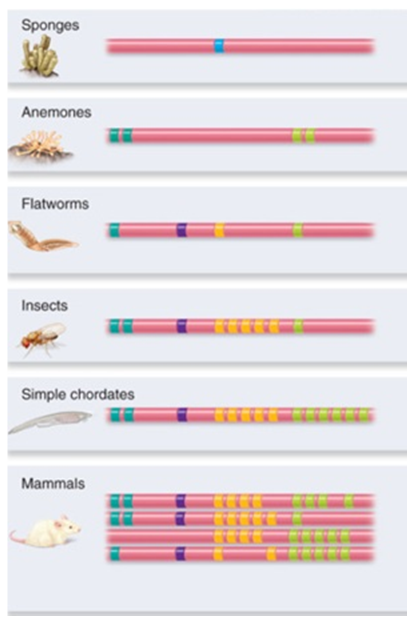A cell may meet the demand for large quantities of a specific protein by:
a. blocking transcription of the gene that encodes the protein.
b. decreasing the half-life of the mRNA that specifies the protein.
c. adding methyl groups to the gene that encodes the protein.
d. gene amplification
e. inhibition of DNA synthesis
d
You might also like to view...
Hammer-head bats are a species of African fruit bats. During the breeding season, males gather in mating arenas, where they display to females who pass through and assess males before selecting individuals with which to mate
This is an example of ____ (intra/inter) sexual selection. Fill in the blank with the appropriate word.
Look at the chromosomes above and determine how many group(s) of Hox genes are associated with body types for each type of animal. These associations are based on anterior, group 3, central and posterior body development.

A. Mammals: 4 groups; Flatworms: 4 groups; Sponge: 2 groups; Anemones: 1 group.
B. Mammals: 4 groups; Flatworms: 4 groups; Sponge: 1 groups; Anemones: 2 group.
C. Mammals: 11 groups; Flatworms: 4 groups; Sponge: 1 groups; Anemones: 4 groups.
D. Mammals: 27 groups; Flatworms: 4 groups; Sponge: 2 groups; Anemones: 1 group.
E. All animals must have at least 2 groups because all animals have a posterior and anterior end.
Which of the following kinds of proteins circulates in the blood and coats the surfaces of microbes to make them more susceptible to engulfment by phagocytic cells?
A) defensive B) histamine C) B cell receptor D) antigen
Mollusks have a modular body plan consisting of what three parts?
A. Foot, mantle, shell B. Mantle, foot, visceral mass C. Foot, visceral mass, cuticle D. Shell, foot, visceral mass